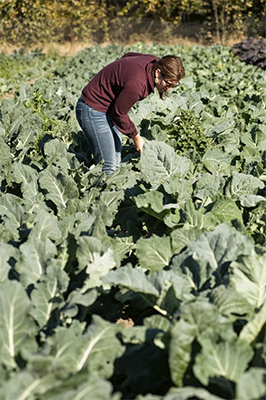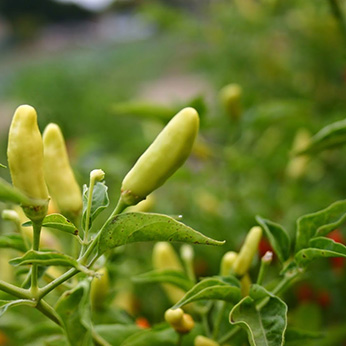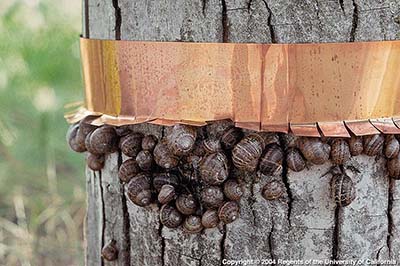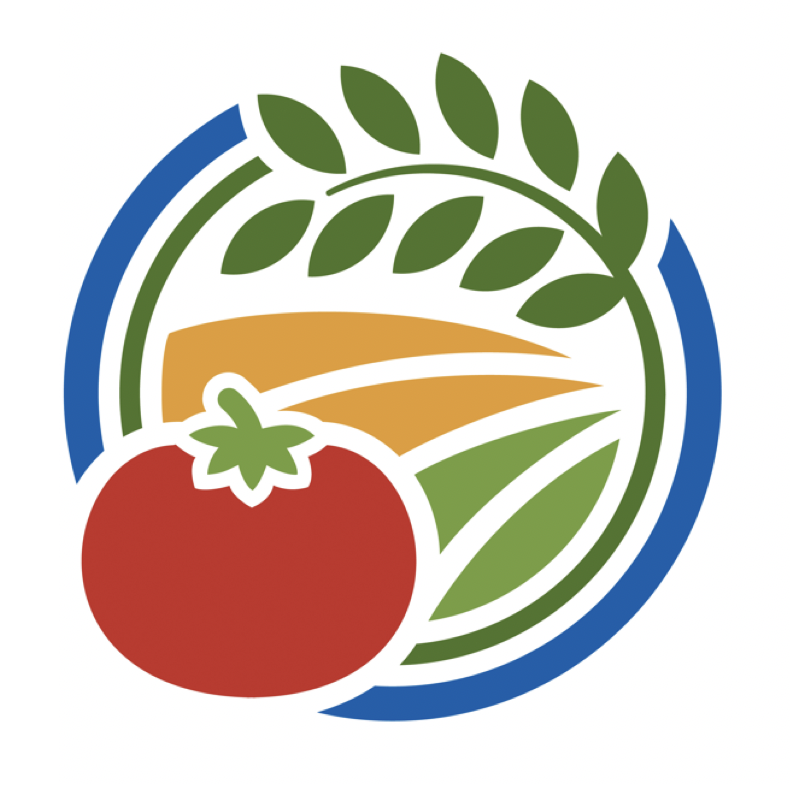The Integrated Pest Management (IPM) method can be used to manage pests in urban, agricultural, or natural areas. The focus of the strategy is to implement a combination of management techniques that are selected to minimize the extent of environmental degradation and reduce the impact of chemical inputs on humans and non-target organisms. IPM is a critical component of the sustainability of many agro-ecological systems.
Overview

The UC Statewide IPM Program defines integrated pest management (IPM) as “an ecosystem-based strategy that focuses on long-term prevention of pests or their damage through a combination of techniques such as biological control, habitat manipulation, modification of cultural practices, and use of resistant varieties. Pesticides are used only after monitoring indicates they are needed according to established guidelines, and treatments are made with the goal of removing only the target organism. Pest control materials are selected and applied in a manner that minimizes risks to human health, beneficial and nontarget organisms, and the environment.”
The IPM method is based on scientific research surrounding pests and pest management. A pest is considered to be any organism that interferes with desirable plants in an agricultural setting, damages homes or other structures, or impacts human or animal health and well being. Pests can be plants, animals, insects, or a bacteria, virus or fungus causing disease. IPM focuses on long term prevention. By researching the environmental factors affecting a pest, the management strategy can be tailored to create unfavorable conditions and reduce the possibility of future outbreaks.
In an effort to increase the sustainability of an agricultural system, IPM “programs” are formulated on a combination of cultural, biological, mechanical, and chemical control methods. IPM does not inherently eliminate the use of pesticides as a control method; an IPM program for a specific crop identifies the levels of pest damage that can be feasibly tolerated before chemical control is required to keep pest populations under control to maintain a viable crop. Through proper timing and concentration of pesticide applications, farmers may be able to minimize non-target species effects and environmental impacts, while reducing the frequency and associated costs of applications.
Beginning over fifty years ago, UC researchers have created an extensive collection of knowledge supporting and fine-tuning effective IPM. IPM programs and recommendations are constantly being formulated and updated based on new research and advancements in technology.
UC Resources

As briefly described above, the UC IPM website offers a wealth of information including pest management guidelines for more than 65 crops and other publications including crop manuals, pest notes, multiple books in print, as well as events and workshops available around the state.

The UC Agriculture and Natural Resources division manages an online catalog that provides links to hundreds of free and for purchase publications related to topics of pest management.
University of California Contributions - History of IPM Research

UC research has played an important role in the development of IPM since the 1940’s. Pioneering work by Dr. Vernon M. Stern, at the Citrus Experiment Station at UC Riverside, and Dr. Ray F. Smith, at UC Berkeley, involved organizing “Pest Control Associations” among alfalfa producers, leading to a decade-long project on the “supervised control” of alfalfa pests and a seminal publication on the concept of integrated control. By 1954, the Center for Biological Control at UC Berkeley and Riverside was established to facilitate the implementation of biological control through research, training and outreach programs and promote the benefits of biological control and sustainable development. Biological control, or the use of natural enemies to control pests, is a key component of many IPM systems.
In 1979, the UC Agriculture and Natural Resources (UCANR) Division established the UC Statewide IPM Program (UC IPM) to:
-
Increase use of ecologically based integrated pest management programs.
-
Provide leadership in IPM, including building coalitions and partnerships that link with communities and public agencies.
-
Increase the predictability and effectiveness of pest management techniques.
-
Develop science-based pest management programs that are economically and environmentally sustainable and socially appropriate.
-
Protect human health and the environment by reducing risks caused by pests and pest management practices.
To implement these goals, the UC IPM funded research projects, established field implementation programs, and developed pest management manuals, initially focusing on nine major crops relevant to California agriculture: alfalfa, almonds, cereals, citrus, cotton, grapes, rice, tomatoes, and walnuts. In response to the emergence of stricter state pesticide regulations and growing demand for organic production practices, the 1990’s brought about an emphasis on alternative pest control strategies to reduce pesticide use. In later years, the program expanded its focus to include the threats of exotic/invasive pests and diseases.
A review of the most recent work shows the program continues to collaborate with the UC campuses, Cooperative Extension, government agencies, and community organizations to provide the most up-to-date information on pests and management options.
UC Support for IPM Implementation - UC IPM Website
UC IPM’s website provides detailed, scientifically based information and guidance to support the key components of an effective, individualized IPM program that is location and system specific. Pest identification: Correctly identifying a pest is key to knowing whether it is likely to become a problem. UC IPM’s on-line pest management guidelines help identify potential pests including agricultural pests, natural environment pests, exotic and invasive pests, and weed species.

Monitoring and assessing pest numbers and damage: Once a pest has been properly identified it is important to determine the number of pests and the extent of damage they are causing. The guidelines offer specific information on monitoring for almost all major pests. UC IPM offers a diversity of trainings and resources for monitoring and assessing, and Cooperative Extension staff, including IPM advisors and CE specialists, are located across the state to support the dissemination of research-based information.
Guidelines for when management action is needed to maximize profitability while minimizing environmental costs: Determining whether a pest can be tolerated or is a problem that warrants control is a crucial aspect in deciding what type of management techniques should be applied. These guidelines may be dependent on the weather or other external factors; the UC IPM website offers tools and models for making these decisions based on site specific climate conditions.
Preventing pests from becoming a problem in the future: Proactive measures to diminish the magnitude of future pest outbreaks is a key component of IPM. This may involve practices such as increasing the concentration of natural enemies through incorporating new cropping techniques, or additional mowing and pruning activities to reduce habitat for pests. Instead of solely depending on reactive control methods, IPM utilizes the extent of research available to help reduce the possibility of debilitating infestations in the future.
Using a combination of biological, cultural, mechanical, and chemical management tools to combat current infestations: Implementation of IPM programs almost always employs a combination of management techniques instead of dependence on only one method. While one of the goals of IPM is to reduce chemical applications, there are circumstances where the most cost-effective and least damaging method for control involves pesticides. In these cases the timing and amount applied is critical in reducing non-target species impact and potential environmental degradation.The UC IPM pest management guidelines provide information and tools to identify appropriate and safest treatment options, including calculators to evaluate degree-days, and compare treatments based on risks to air and water quality. Pesticide Safety Publications are also available.
Additional resources, tools, publications, and more, are available on the UC IPM website to help individuals develop and implement an IPM program.
Page authors: Leigh Archer, Bev Ransom, Mariah Coley
Reviewed by: Kent Daane, Jim Farrar, Deborah Letourneau, & Stacy Philpott
UC Sustainable Agriculture Research and Education Program. 2017. "Integrated Pest Management (IPM)." What is Sustainable Agriculture? UC Division of Agriculture and Natural Resources. <https://sarep.ucdavis.edu/sustainable-ag/ipm>
